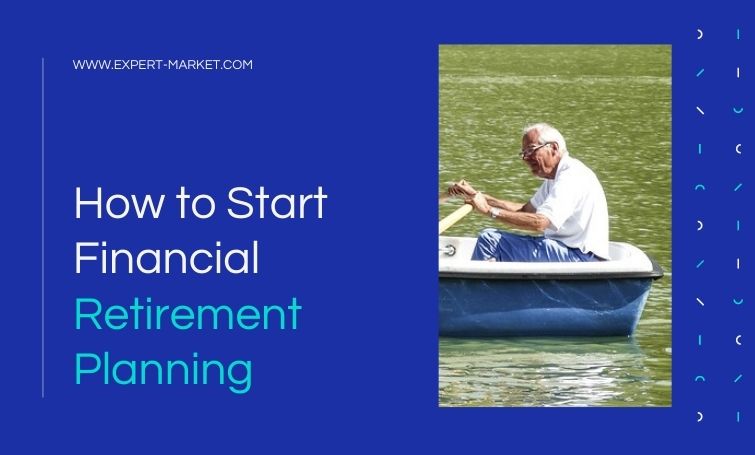Know when you will retire
Using your age today and getting to know the age at which you are expected to retire are key first steps in creating an effective plan for retirement. Did you know that the longer the time is between now and your expected retirement, the higher the level of risk your portfolio can take?
For example, if you are young, with more than 30 years until your planned retirement, it is a good idea to keep the vast majority of the assets you own in riskier investments, like stocks. This is because, over periods of time longer than 10 years, though they certainly go up and down, stocks are known to outperform most other securities, like bonds, for example.
If you want to keep your purchasing power when you are retired, your assets and savings also need the ability to evade inflation. Think about it – an inflation rate of only 3%, for example, will decrease the value of your savings by 50% over 24 years! Though it doesn’t seem like much each year, by the time you retire, this will be a big deal.
Then, the older you get, the more your portfolio ought to be composed mainly of your income, and the preservation of capital; you will have to allocate more of your funds to securities like bonds.
There’s no chance of you getting the kind of returns you might have gotten from stocks in this way. Your bonds will, however, provide a stable, less volatile steady stream of income that you can use to supplement your own income. Plus, at this age, you will also be less concerned about inflation and the cost of living.

Put together a realistic budget
If you want to know exactly what size of retirement portfolio to work towards, you’ll need to anticipate an extremely realistic idea of your post-retirement spending. People generally think that their annual spending will amount to anywhere from 70% to 80% of what it was previously, maybe because they think they’ll be travelling less or eating out less. However, this often turns out to be inaccurate. Unexpected medical bills will often appear, for example, or you may still need to pay off some of your mortgage.
As well as this, you may like to spend a few of the first years of your retirement treating yourself to cruises, skydives, or other pricey past-times, making your annual spending more like 120% to 150% of what it formerly was. After all, with eight or so more hours now freed up every day, you’ll be going out shopping and sightseeing much more than you realize. This is all fine and normal, but you should try to factor this into your budget early on.
And of course, you should also pay attention to the fact that the average lifespan is increasing year on year.
Do you have children? At some point after your retirement, will you want to downsize from your empty nest, or fund the further education of your children? If this is so, this is another thing you will need to factor into your retirement plan.
On top of all this, it’s a good idea to review the plan you have made once or twice a year, to check that your savings are on track.
Get to know your after-tax rate of investment returns
After you’ve worked out the age at which you want to retire and your anticipated spending, you must also calculate your after-tax real rate of return. Figuring out what your after-tax real rate of return is will help you to know if it is feasible that your portfolio could produce the income you will need.
A rate of return in excess of 10% before taxes is generally unrealistic, even in a long-term investment. But as you age, this return threshold will go down. This is because a low-risk retirement portfolio consists mainly of low-yielding fixed-income securities.
Usually, investment returns are taxed, though this depends on the type of retirement account you hold. Because of this, you must calculate your rate of return on an after-tax basis.
Figuring out your tax status when you start to withdraw the funds is also a critical part of your retirement planning.
Individual pension planning
Another option to enhance your retirement benefits is to take out an individual pension plan, or IPP. An IPP is an employer-sponsored defined benefit pension plan, for providing tax advantages and enhanced retirement benefits.
If you are between the ages of 40 and 71 with an annual T4 income that’s over $100000, or if you are an incorporated self-employed business owner or professional, or an employer who is looking to enhance a key employee’s retirement benefits, an IPP might be right for you.
If you’re beginning your financial retirement plan, take a look at WEALTHinsurance.com to find out more about IPPs.
Keep up estate planning
Another imperative part of any good retirement plan, estate planning is something that requires various different professionals’ expertise, like accountants and lawyers.
One important part of both an estate plan and your retirement plan is getting life insurance.
If you have both life insurance and a well thought-out estate plan, this will help to ensure that your loved ones do not experience any financial hardship when you die. This is because a well-established plan means that you will have more control of the distribution of your assets.
Another benefit of having a well-outlined estate plan is that it allows avoidance of an expensive and time-consuming probate process.
You will also need to take a look at how tax may affect your estate plan. Whether you want to leave your death benefit to your family or to give it to a charity, you must compare the tax implications of both giving the benefit, or passing it through the estate process, instead.
The typical retirement plan investment approach is one where you produce returns that will meet yearly inflation-adjusted living expenses while preserving the portfolio’s value. Then, when you die, the portfolio is transferred to your beneficiaries. However, a tax advisor will help you to determine the right plan for you.
































